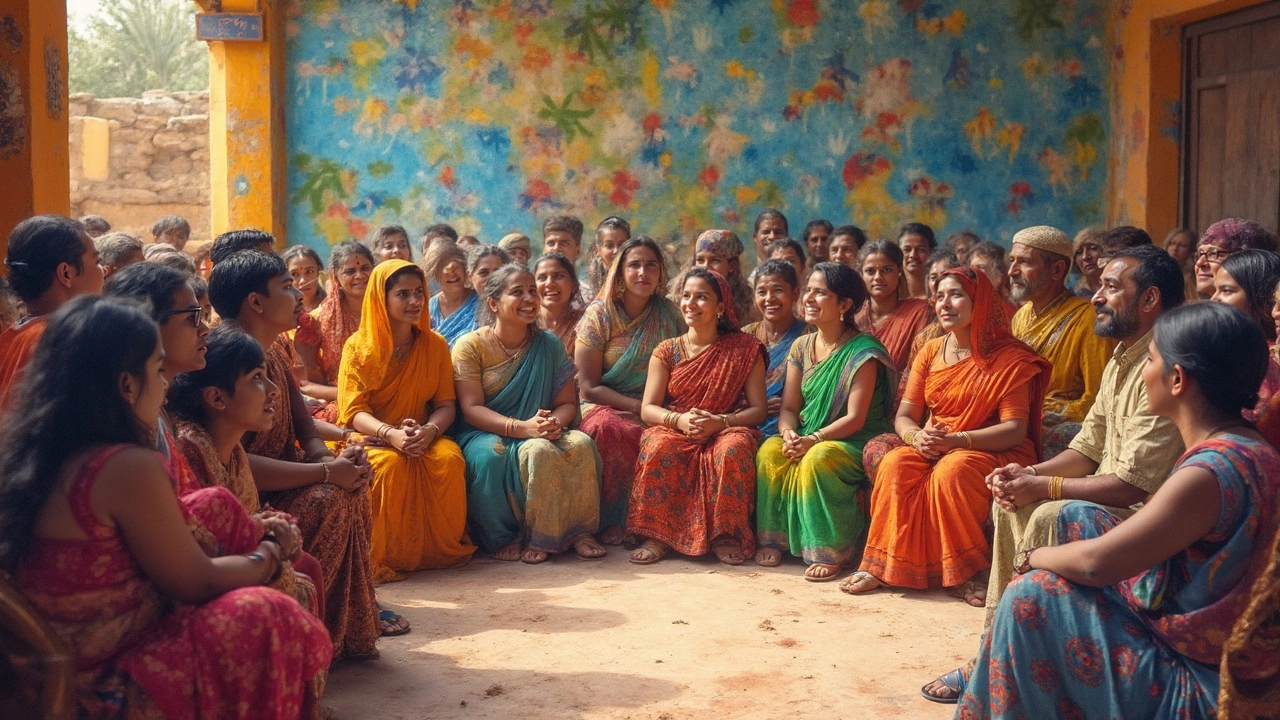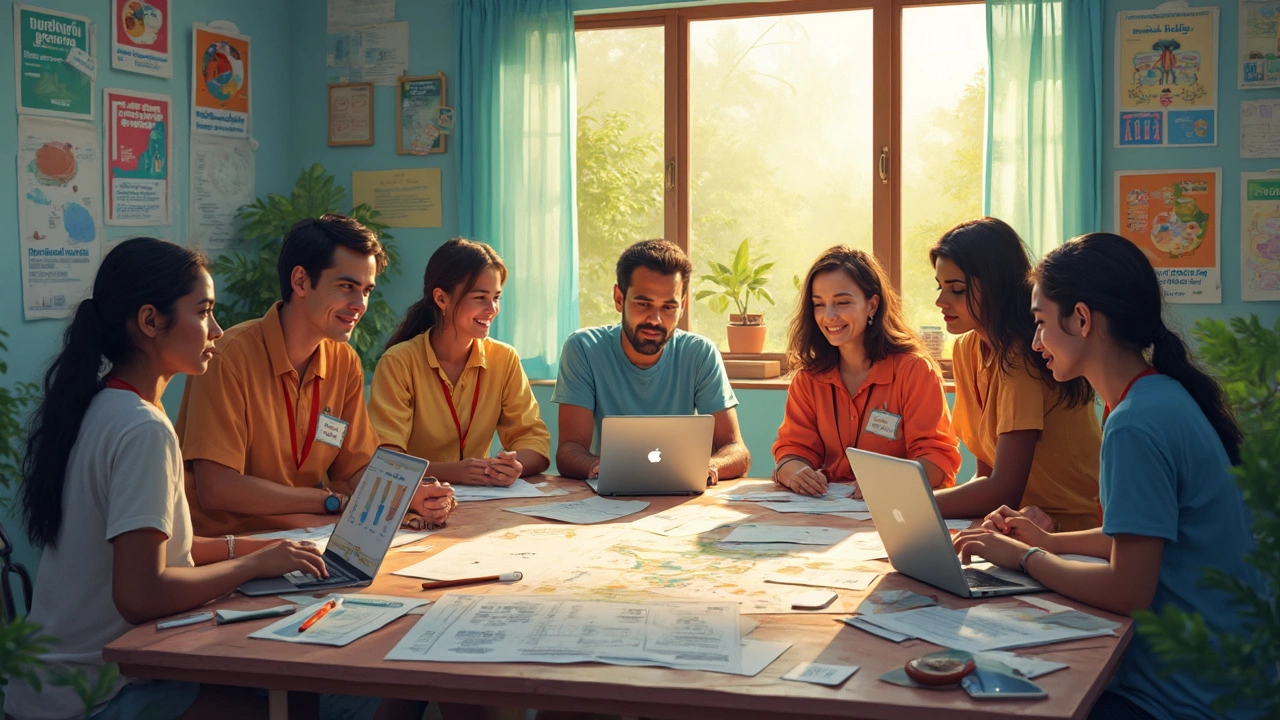
- Created by: Lydia Carmichael
- Completed on: 2 Mar 2025
- Categories: Community Support
Planning a community outreach program might feel like trying to solve a giant puzzle, but it's a lot about connecting the right pieces. First things first, you've got to get a good grasp of what your community really needs. Is it a food drive, a literacy program, or something entirely different? Once you know that, gathering a committed team can turbocharge your efforts. You don't need superheroes, just folks who care and are willing to pitch in.
Next up is the planning stage. Now, this sounds daunting, but it's about laying out clear goals and figuring out the steps to get there. Resources can be tight, so think creatively about how to gather support, be it through local businesses or grant applications. Volunteers are often the lifeblood of these programs, and engaging them effectively is crucial. Create roles that play to their strengths and clearly show how their work contributes to the bigger picture.
- Understanding Community Needs
- Building Your Team
- Planning and Resources
- Engaging Volunteers
- Executing the Program
- Evaluating the Impact
Understanding Community Needs
Understanding what your community truly needs is the cornerstone of any successful community outreach program. It might seem a bit daunting at first, but it's all about listening and observing. Start with some simple, yet effective steps to gather the right intel.
Engage Directly with Locals
The first step is reaching out and talking to people in your area. Host a town hall meeting or set up a casual meet-and-greet at a local coffee shop. The key is to genuinely listen to what folks are saying. You might discover that there's a larger need for after-school programs than initially thought.
Utilize Surveys and Questionnaires
If face-to-face conversations aren't feasible, consider sending out surveys or questionnaires. Keep them short and sweet to ensure maximum participation. Questions might cover areas such as essential services or areas where improvement is needed. Make it digital and easy to fill out, perhaps using Google Forms, for maximum reach.
Research Existing Data
There's often already a wealth of information available about your community. Check out local government reports or organizations that track community health and needs. They might already have detailed statistics on local education levels, housing, or even food security, which can guide your program planning.
Identify Key Areas for Action
Interpreting the information gathered can help pinpoint specific initiatives. For instance, if the majority of feedback highlights a need for environmental action, your program might center around organizing community clean-ups or workshops on sustainability.
Example Data Table
Here's a basic example of what you might find when researching:
| Area of Need | Percentage of Respondents |
|---|---|
| After-School Programs | 45% |
| Senior Citizen Services | 30% |
| Community Health Workshops | 25% |
Remember, a well-organized outreach program begins with a clear understanding of these needs, guiding you to create something that truly resonates with and benefits your community.
Building Your Team
So, you've figured out what your community needs, and now it's time to build that dream team. This part is crucial because these are the folks who'll drive your community outreach program forward. But where do you start? It's like casting a movie: you've got to find people with the right skills and passion.
Find the Right People
First, look around your community. Chances are, there are people already interested in making a difference. Use social media platforms, local events, and word of mouth to reach out. Don't just look for any volunteers; look for specific talents. Need someone for planning logistics? Maybe someone with organizing experience would be perfect!
Match Skills with Roles
Once you've got people interested, match their skills to what your program needs. Here's a simple structure to follow:
- Planners: Ideal for those who are great at seeing the big picture and coordinating tasks.
- Doers: These are your hands-on folks, perfect for executing the program tasks.
- Communicators: If someone has a way with words or people skills, they can be your outreach coordinators.
- Number Crunchers: Good for those who love diving into data and handling budgets.
Communicate Clearly
Communication is key. Keep the team in the loop with regular meetings and updates. Letting them know how their work impacts the community will boost morale. Plus, it keeps everyone aligned with the program's goals.
Create a Healthy Team Culture
A positive, inclusive environment will keep your team motivated. Celebrate small wins together and make space for everyone's voice. Remember, a happy team is an effective team!
Your strong team will be the backbone of your community outreach efforts. With the right mix of enthusiasm, skill, and clear communication, you're all set for success!
Planning and Resources
Getting the planning and resources right is like setting a strong foundation for your house; without it, things might crumble. Start by setting clear goals. What do you want your community outreach program to achieve? Whether it’s feeding 100 families or tutoring 200 kids, clarity on this helps guide every decision.
Set a Realistic Budget
Money talks, and knowing how much you have to play with keeps things in check. Break down your expenses into categories—venue, equipment, marketing, and any necessary permits. Be ready to adjust as things unfold; flexibility is key.
Gather Resources Wisely
Sometimes, your community is your best resource. Partner up with local businesses—they might just want to support and contribute to their community too. Maybe they can provide snacks or a venue space, cutting down your costs significantly.
Plan the Logistics
Think about the nitty-gritty details like timing, location, and supplies. If your program involves children, make sure it’s a kid-friendly environment. Got a lot of volunteers? Set clear schedules and tasks so everyone knows their role. Efficient planning prevents the dreaded chaos.
Legalities and Permissions
Before setting your plan in motion, check local laws and regulations. You might need permits or insurance, especially if your event is public. This step is crucial to avoid any surprise hiccups down the road.
If you're lucky, grant funding can give your program that financial boost it needs. Research your options and apply to grants that align with your goals. Remember, you can't find what you don't look for!

Engaging Volunteers
Getting people excited about volunteering is like lighting a fire. They want to feel needed, see results, and be part of something bigger. Start by creating volunteer roles that align perfectly with their skills and interests. If someone loves talking to people, put them in a role that involves community interaction. If they have a knack for organizing, have them help coordinate events.
When you're reaching out to potential volunteers, be clear and specific about your needs and how they directly tie into the community outreach goals. People are more inclined to help when they understand the bigger picture and their part in it. Use social media, local events, and even school networks to spread the word. You could even host an informal meeting or open house for potential volunteers to learn more about the program.
Appreciation and Feedback
Recognizing and appreciating your volunteers is crucial. Regular shout-outs, thank-you notes, or small gatherings can boost morale and commitment. Remember, everyone's time is valuable, and knowing they are valued can make a world of difference. Listening to their feedback can also provide insights on how to improve the program and make their experience better.
Training and Support
Provide volunteers with the right training and resources to feel confident in their roles. This doesn't mean lengthy seminars but more like offering guidelines, mentor support, or even a quick online session. The better prepared they are, the smoother your local initiatives will run.
| Volunteer Role | Percentage of Volunteers |
|---|---|
| Event Coordination | 30% |
| Community Interaction | 40% |
| Administrative Support | 20% |
| Other Roles | 10% |
Finally, keep communication open. Regular newsletters or updates can keep volunteers informed about the progress and impact of the program. They'll feel more connected and inspired to continue their involvement. In the end, remember, happy and engaged volunteers are the heartbeat of successful program organization.
Executing the Program
Alright, now that you've got everything set up, it's time to bring the plan to life. The execution stage can be both exciting and nerve-wracking, but here's how to keep it smooth:
Stay Organized
First off, organization is king. Keep track of all activities with a clear schedule. This might be a simple shared calendar or a more sophisticated project management tool. The key is making sure everyone knows their roles and the timeline. In fact, in a survey by VolunteerMatch, 40% of volunteers said organization is key to their continued commitment.
Communication is Crucial
Hold regular check-ins. This can be a quick update meeting or a round of emails. Make sure everyone feels in the loop, especially your volunteers. After all, a volunteer who feels informed is a happy volunteer.
Adaptability is Your Friend
Things don't always go as planned. Be ready to adapt and change plans if needed. Flexibility is often the secret weapon of a successful community outreach program. Have a backup plan or two, just in case. It's like teaching someone to dance — you gotta go with the flow sometimes.
Celebrate Small Wins
Don’t wait till the end to celebrate. Acknowledging small achievements along the way can keep motivation high. A simple 'thank you' email or a public shoutout can work wonders.
Collect Feedback
As you’re in the thick of things, gather feedback from your team and participants. This isn't just for the sake of it; it helps you refine processes for future programs. You might find ways to make your next
Evaluating the Impact
So, you've rolled out your community outreach program, and now you're eager to know if all that hard work has made a difference. Evaluating the impact isn't just about giving yourself a pat on the back; it's crucial for understanding what worked and what didn't. This way, you can tweak and improve your future efforts.
Set Clear Metrics from the Start
Before you launched your program, hopefully, you set some clear goals. Was it increasing literacy by 20% in a year or distributing 500 meals a month? Having these benchmarks helps a ton when you're trying to measure success. Always use numbers where you can—they're the best at telling the full story.
Collect Data and Feedback
The next step is gathering data. Surveys and feedback forms can give you direct insights from participants and volunteers. Ask what went well, what challenges they faced, and any suggestions for improvement. This information is gold. If you're techy, online surveys can make this easier and reach more people.
Analyze the Outcome
Now, crunch those numbers and read the feedback. Are you meeting your set goals? Sometimes, it's helpful to compare your metrics with similar programs or past efforts you’ve run. Remember, numbers alone aren't everything. A program that brought people together and built community spirit is valuable too.
If you've got more concrete data to share, like improvements in local employment rates or school participation, consider displaying them in a table:
| Metric | Target | Achievement |
|---|---|---|
| Meals Distributed Monthly | 500 | 550 |
| Community Events Hosted | 12 | 15 |
| Volunteer Retention Rate | 75% | 80% |
Share Your Success
Finally, don't keep all your achievements to yourself! Share your results with your team, community, and any sponsors or partners involved. It shows transparency and builds trust. Plus, it might just inspire others to pitch in or start their own local initiatives.
Evaluating isn't a one-time deal. Keep at it to ensure your program continues to evolve and meet the ever-changing needs of your community. There's always room to grow and make a greater impact.